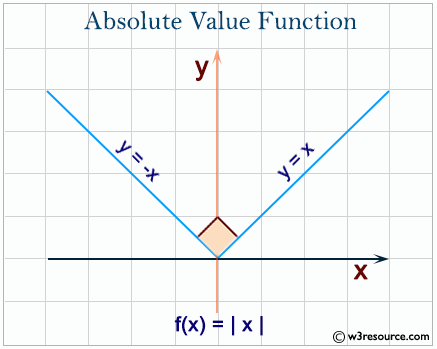Python: abs() function
abs() function
The abs() function is used to get the absolute (positive) value of a given number.
The argument may be an integer or a floating point number. If the argument is a complex number, its magnitude is returned.
Syntax:
abs(x)
Version:
(Python 3)
Parameter:
| Name | Description | Required / Optional |
|---|---|---|
| number | Numeric value. | Required |
If x is a complex number function returns it's magnitude. The absolute value of a complex number z = x + yj is

Return value:
Return the absolute value of a number.
Pictorial Presentation:

Example: Python abs() function
print(abs(-100))
print(abs(1023))
print(abs(123.25))
print(abs(-2033.66))
Output:
100 1023 123.25 2033.66
In Python abs() works with integers and complex numbers. It's return type depends on the type of its argument.
>>> type(-2)
<class 'int'>
>>> type(abs(-2))
<class 'int'>
>>> type(-2.0)
<class 'float'>
>>> type(3+4j)
<class 'complex'>
>>> type(abs(3+4j))
<class 'float'>
>>>
Get absolute value of numbers of a list:
nums = [12,30,-33,-22,77,-100]
print("Original list:")
print(nums)
print("\nAbsolute values of the above numbers:")
print([abs(x) for x in nums])
Output:
Original list: [12, 30, -33, -22, 77, -100] Absolute values of the above numbers: [12, 30, 33, 22, 77, 100]
Convert a negative number to positive number:
n = -452
print(n)
print(abs(n))
n = -123.45
print(n)
print(abs(n))
Output:
-452 452 -123.45 123.45
Python Code Editor:
Previous: Python Built-in Functions
Next: all()
Test your Python skills with w3resource's quiz
